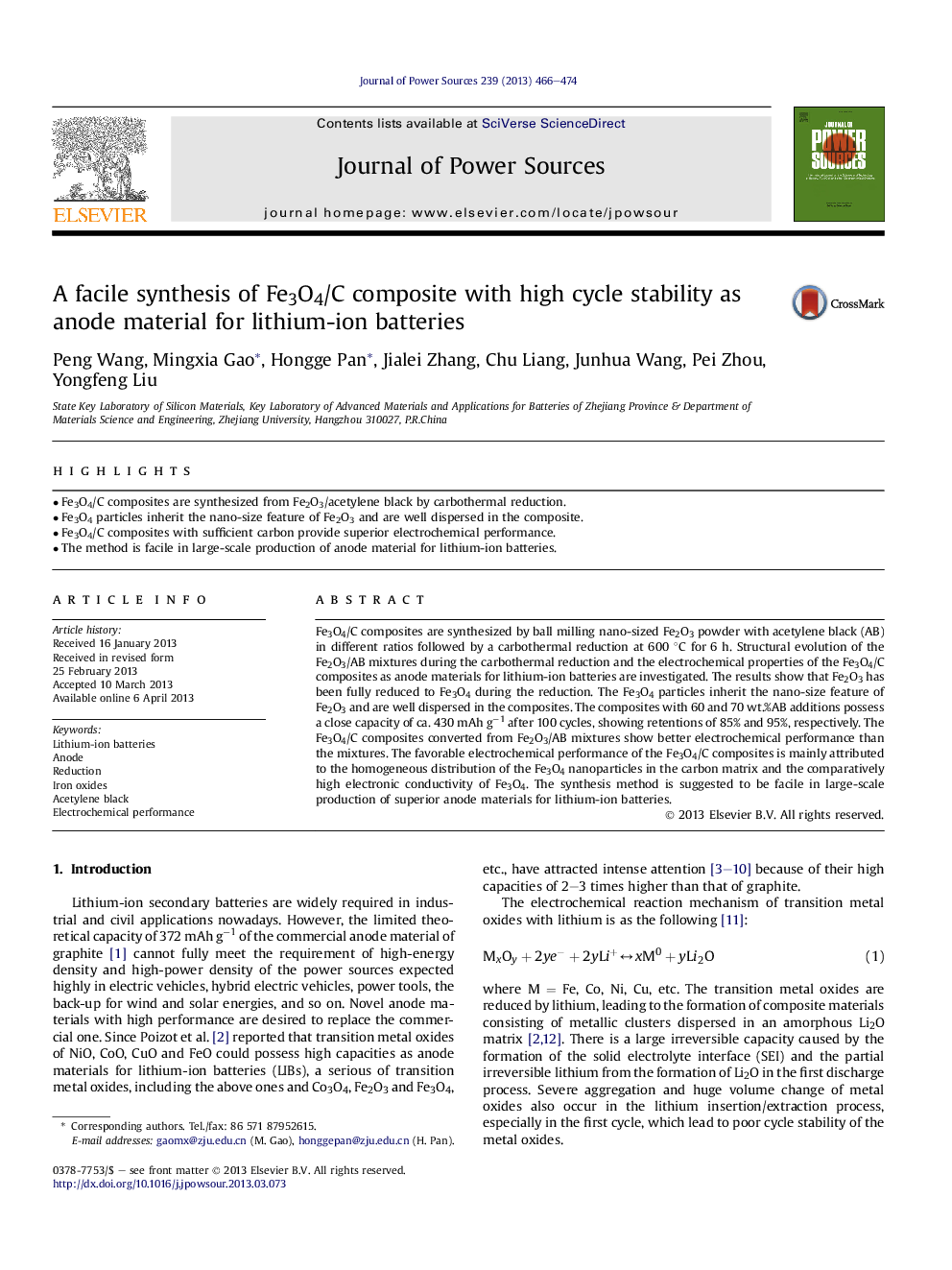| Article ID | Journal | Published Year | Pages | File Type |
|---|---|---|---|---|
| 7740538 | Journal of Power Sources | 2013 | 9 Pages |
Abstract
Fe3O4/C composites are synthesized by ball milling nano-sized Fe2O3 powder with acetylene black (AB) in different ratios followed by a carbothermal reduction at 600 °C for 6 h. Structural evolution of the Fe2O3/AB mixtures during the carbothermal reduction and the electrochemical properties of the Fe3O4/C composites as anode materials for lithium-ion batteries are investigated. The results show that Fe2O3 has been fully reduced to Fe3O4 during the reduction. The Fe3O4 particles inherit the nano-size feature of Fe2O3 and are well dispersed in the composites. The composites with 60 and 70 wt.%AB additions possess a close capacity of ca. 430 mAh gâ1 after 100 cycles, showing retentions of 85% and 95%, respectively. The Fe3O4/C composites converted from Fe2O3/AB mixtures show better electrochemical performance than the mixtures. The favorable electrochemical performance of the Fe3O4/C composites is mainly attributed to the homogeneous distribution of the Fe3O4 nanoparticles in the carbon matrix and the comparatively high electronic conductivity of Fe3O4. The synthesis method is suggested to be facile in large-scale production of superior anode materials for lithium-ion batteries.
Related Topics
Physical Sciences and Engineering
Chemistry
Electrochemistry
Authors
Peng Wang, Mingxia Gao, Hongge Pan, Jialei Zhang, Chu Liang, Junhua Wang, Pei Zhou, Yongfeng Liu,
